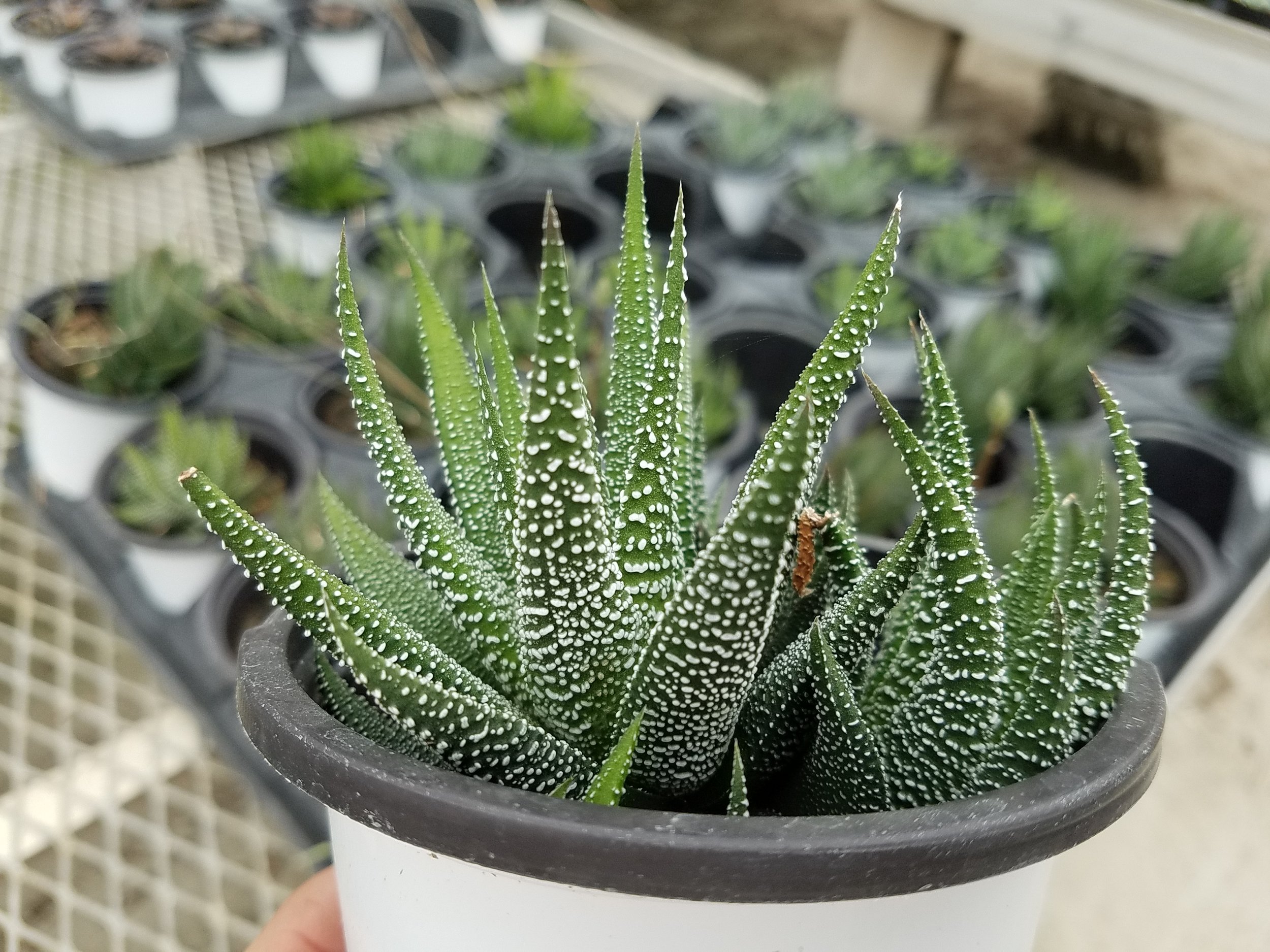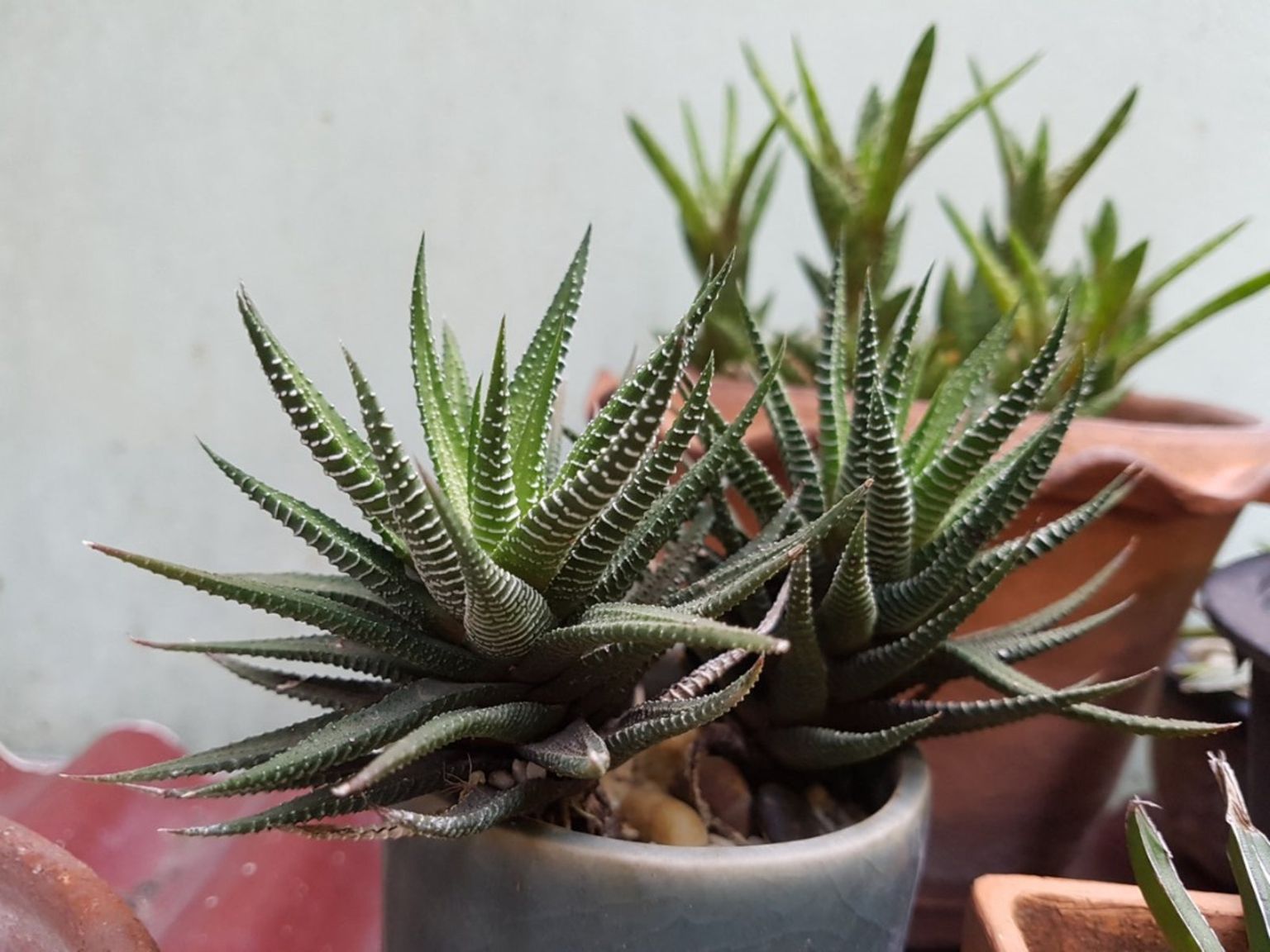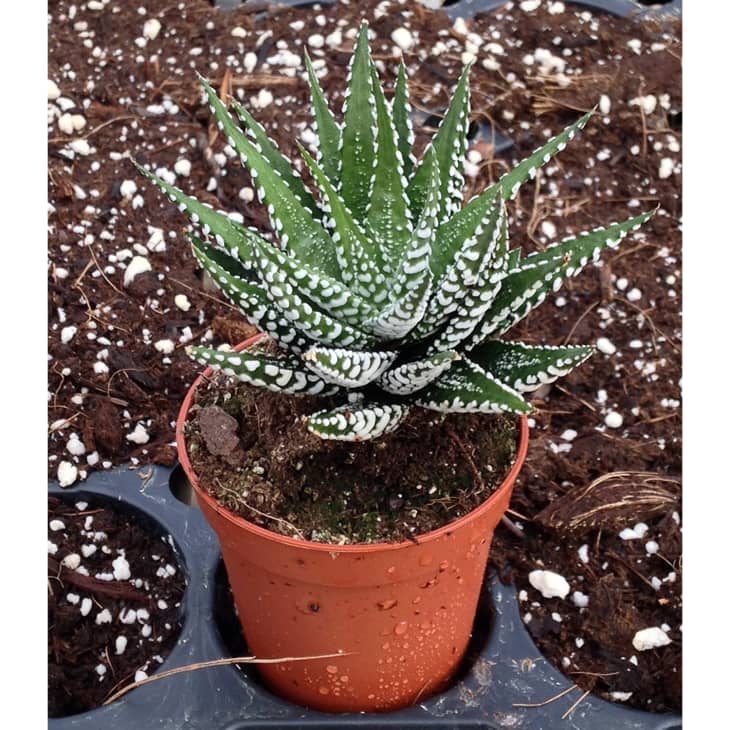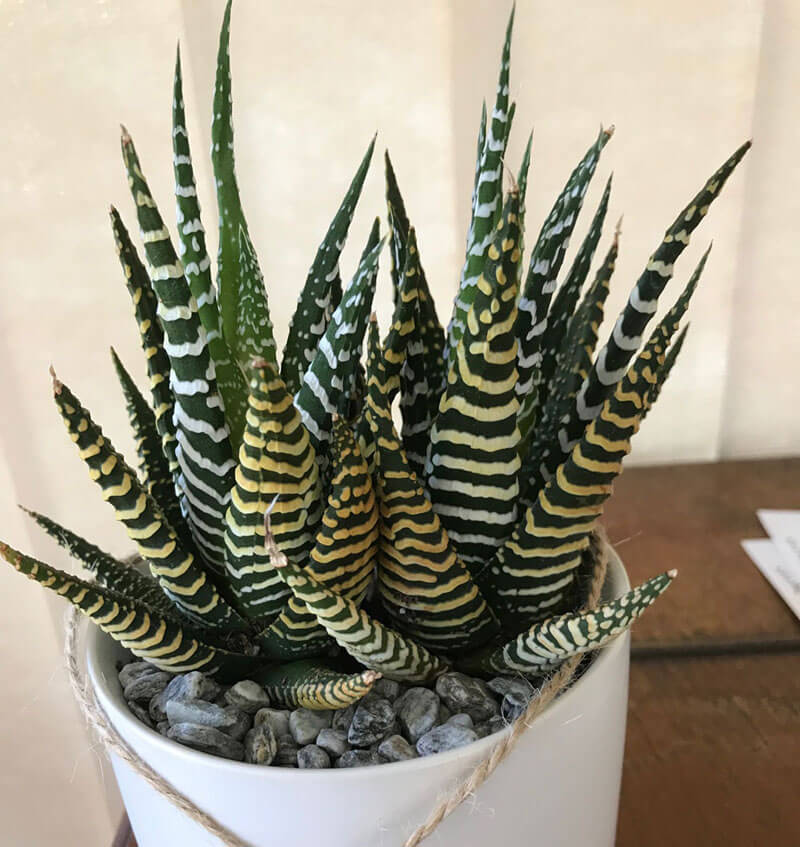
Haworthia Database Plants
Haworthia cymbiformis. The leaf windows are less prevalent on this succulent, but still obvious enough that it's earned the name cathedral window Haworthia. The windows are concentrated on the tips, so most of each leaf is cloudy green. The leaves are boat-shaped, pointier, and flatter than those of H. cooperi and H. obtusa.
Begini Perawatan Pada Tanaman Haworthia Limifolia!
Haworthia attenuata. Common name: Zebra Haworthia. USDA hardiness zone: 10 - 11. Haworthia attenuata is an outstanding succulent with rosettes of pointed, fleshy leaves. The plant leaves are arranged in a spiral pattern, creating an attractive and symmetrical appearance, making it a must-grown indoor succulent.

Berbagai Jenis Kaktus Hias yang Cocok Untuk Taman GoGreen Garden
Haworthia is a large genus of small succulent plants endemic to Southern Africa (Mozambique, Namibia, Lesotho, Eswatini and South Africa). Like the aloes, they are members of the subfamily Asphodeloideae and they generally resemble miniature aloes, except in their flowers, which are distinctive in appearance. They are popular garden and.

Haworthia Growth Guide (With Pictures) Succulents Network
A New Arrangement of the Genus Aloe. 1804. Haworthia is a genus of succulent plants endemic to southern Africa, named after the British botanist Adrian Haworth. Haworthias are relatively small, and most consist of low-growing rosettes of succulent leaves. With multitudes of species, they comprise numerous striking appearances and unusual forms.

Haworthia Care Tips For Growing Haworthia Window Leaved Plants
Therefore, the best way to tell the difference between these two Haworthia types is by the transparency of their leaves. H. decipiens have leaves with transparent tips, whereas H. arachnoidea doesn't. H. arachnoidea has seven varieties. Mature Size: 7 inches in diameter. Hardiness: -1.1°C or 30°F.

Haworthia limifolia variegata in 2022 Healthy plants, Succulents, Planting succulents
Haworthia reinwardtii is a very attractive succulent plant, that grows in the shape of a rosette and can reach up to 20 cm in height, tending to cluster at the base. The fleshy and pointed leaves are all turned upwards, making them assume a columnar habit. The dark green leaves are covered with white or grayish spots.
/close-up-of-potted-haworthia-674248829-588121ef3df78c2ccd115c24.jpg)
Haworthia Plant Care and Growing Guide
Also called Boat-Formed Haworthia, Cathedral Window is a very attractive and nicely shaped variety. Its 4-inch-wide rosettes are nicely shaped and uniform. They produce many offsets, quickly becoming a mound of these pretty flower-like shapes. In late spring, Cathedral is a succulent that produces flowers.

Haworthia Tipos Cuidados Dónde proviene Como reconocer
To repot Haworthia succulents, remove the plant from the pot. Using a sharp clean knife, separate any offshoots from the 'mother' plant. Shake off excess dirt from the roots and prune off any dead roots. Take a pot one size larger than the existing one and fill it three-quarters full with a well-draining cactus mix.

Jenis Haworthia Variegata Terpopuler Dan Menyegarkan Mata!
20 Haworthia Succulents Illustrated: A Comprehensive Guide. Haworthia is a cool succulent that's actually part of the same family as aloe. There are around 160 different species of these plants, and they're pretty unique. One thing that sets them apart is how their leaves form a cool rosette shape, like a flower, sticking out from the main.

JENIS HAWORTHIA DAN MENGENAL HAWORTHIA YouTube
Welcome to the Ultimate Plant Care Guide for Haworthia! This pint-sized powerhouse is like having your own miniature jungle right on your desk. If a cactus and an aloe had a baby, and it decided to become a minimalist, it would be a Haworthia. But don't worry! We're here to make plant parenting as easy as finding a cute cat video on the internet.
Jual Paket 5 jenis Haworthia free pot Shopee Indonesia
Haworthia chloracantha is a popular species of succulent plant, and it is often used as a houseplant or in gardens. The plant is easy to care for and requires little maintenance. However, it is important to provide the plant with adequate sunlight and water. Haworthia chloracantha can be propagated from seed or offsets. 9. Haworthia chocolate.

Haworthia Plant Care How to Grow Haworthia Plants Apartment Therapy
Haworthia turgida. Haworthiopsis 'Baccata'. Haworthiopsis coarctata. Haworthiopsis concolor. Haworthiopsis fasciata "Zebra Plant or Zebra Haworthia". Haworthiopsis reinwardtii. Haworthia varieties (including Haworthiopsis) are smaller succulents, typically green. Some have windowed leaves, while others have sturdier leaves.

Haworthia (Zebra Cactus / Pearl Plant / Star Window Plant) Guide Our House Plants
In new soil, set the base of the plants about a third of the way into the soil and allow for roots to regrow. Keep soil just barely moist during this time with occasional drying. Haworthias might also get infestations of common plant pests such as mealybugs. To get rid of mealybugs, remove plants from the soil and spray them with insecticidal soap.

Hooray for Haworthia! Bundle 6 Haworthia Varieties Little Prince To Go
Haworthia often has translucent "windows" at the tips, allowing light to penetrate the leaf's interior. Haworthiopsis species often have thicker leaves and lack this "window". As well as being easy going houseplants, when it comes to picking out a Haworthia or Haworthiopsis there's a vast number of different varieties to choose from.

Haworthia paket 3 jenis (on pot bee 131) Lazada Indonesia
Haworthia, also called zebra cactus, pearl, star window, and cushion aloe, is a large genus of small, slow-growing succulent plants that resemble mini aloe plants with rosettes of fleshy green leaves generously covered with white pearly warts or bands. Commonly kept as indoor plants, they require bright light but not all-day full sun, preferring temperatures between 70 to 95 degrees Fahrenheit.

Haworthia Cultivars and Hybrids Haworthia limifolia variegated Ref 29031214
Haworthia is a lesser-known succulent,but it's a spectacular and fascinating group of small succulent plants with an incredible diversity of structures, patterns, and colours.